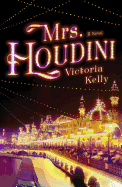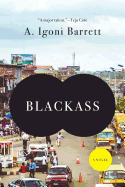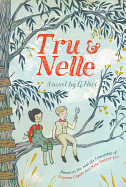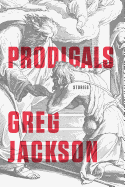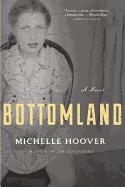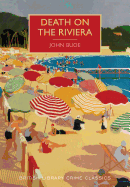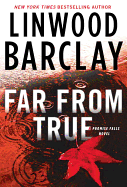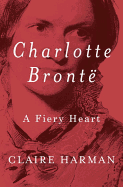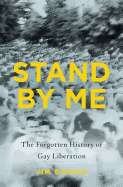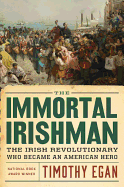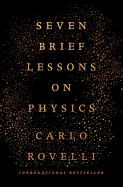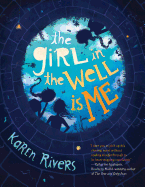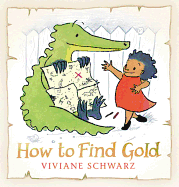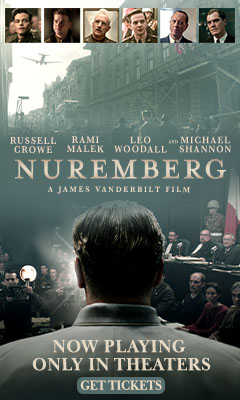Friday, March 11, 2016
The tradition of the sexy wall calendar is robust--New York firefighters, the Warwick rowing team. Ciara Ryan chose to build upon this artistic form in 2010 to support Bóthar, an Irish charity that works through local community groups to help overcome hunger, poverty and environmental decline. For this project, she selected her subjects carefully: Irish farmers.
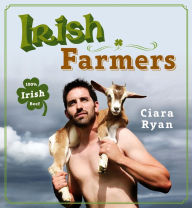 After online success, Ryan's Irish Farmers is now available from Griffin Books, a novelty in hardcover that also benefits Bóthar. In it are many exemplars of sturdy Irish stock, handsome men carrying goats, tussling with deer, shearing sheep and serenading a field of cattle. And each offers a few fun factoids about himself. Jamie, for example, "can crack an egg with no hands," an eyebrow-raising talent that will no doubt come in handy if he's hungry for some Full Irish Slab Pie--a dish Imen McDonnell calls "the Irish pièce de résistance" in her Farmette Cookbook (Roost Books). It is a lattice-topped piecrust bursting with fried eggs, pork sausage, bacon, sautéed mushrooms and broiled tomato halves, perfect for "feeding a pack of hungry farmers, or visitors from abroad embarking on a pilgrimage to the ancient mountain of Croagh Patrick."
After online success, Ryan's Irish Farmers is now available from Griffin Books, a novelty in hardcover that also benefits Bóthar. In it are many exemplars of sturdy Irish stock, handsome men carrying goats, tussling with deer, shearing sheep and serenading a field of cattle. And each offers a few fun factoids about himself. Jamie, for example, "can crack an egg with no hands," an eyebrow-raising talent that will no doubt come in handy if he's hungry for some Full Irish Slab Pie--a dish Imen McDonnell calls "the Irish pièce de résistance" in her Farmette Cookbook (Roost Books). It is a lattice-topped piecrust bursting with fried eggs, pork sausage, bacon, sautéed mushrooms and broiled tomato halves, perfect for "feeding a pack of hungry farmers, or visitors from abroad embarking on a pilgrimage to the ancient mountain of Croagh Patrick."
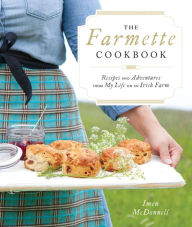 Rich with regional favorites like the Boxty potato cake, as well as Irish twists on international fare like Hot-Smoked Burren Salmon Tacos, The Farmette Cookbook is all about buying local, organic produce, free-range livestock and sustainability no matter where you live. Rural living and hearty home cooking are sexy as ever. Whether you want to roll up your sleeves and get to work, or just admire the view, these books make it clear that the Irish know just where to start. --Dave Wheeler, associate editor, Shelf Awareness
Rich with regional favorites like the Boxty potato cake, as well as Irish twists on international fare like Hot-Smoked Burren Salmon Tacos, The Farmette Cookbook is all about buying local, organic produce, free-range livestock and sustainability no matter where you live. Rural living and hearty home cooking are sexy as ever. Whether you want to roll up your sleeves and get to work, or just admire the view, these books make it clear that the Irish know just where to start. --Dave Wheeler, associate editor, Shelf Awareness
Mrs. Houdini
by Victoria Kelly
"It seemed to Bess that her husband was a magician who wanted, desperately, to believe that magic was real." He therefore vowed to contact his wife from the grave if he was the first of the pair to die. Mrs. Houdini starts three years after the famed escape artist's untimely death, when Bess is struggling financially and running a tearoom in New York. Despite opportunists' best efforts to dupe her, Bess remains convinced Harry will reach out from the afterlife. So when Bess sees fragments of the secret code they arranged in photographs, she's confident it's more than a coincidence: "Because Harry loved tricks. His whole life was an illusion. He lived his magic. Nothing was ever what it seemed." However, Bess isn't quite prepared for the reality of Harry's greatest trick.
Alternating between 1929 and the preceding three decades of the Houdinis' marriage, Kelly animates the love story of this historic couple with a smooth blending of research and artistry. Their personalities light up the stage on which this clever story plays out, stealthily distracting the audience with charm and intrigue while the plot casually sets up the thrilling final act. Dazzling and enchanting, Mrs. Houdini will captivate readers in a fashion that would make Harry and Bess proud. --Jen Forbus of Jen's Book Thoughts
Discover: Bess Houdini tries to uncover her husband's mystical final message through a series of secret codes.
Blackass
by A. Igoni Barrett
With a clear nod to Kafka's The Metamorphosis and faint echoes of Griffin's Black Like Me, Nigerian author A. Igoni Barrett's first novel, Blackass, tells of a man whose life is turned upside down by an inexplicable physical transformation. In Lagos, Furo Wariboko awakes one day to find himself a full oyibo--a white man ("the pink life lines in his palms, the shellfish-coloured cuticles, the network of blue veins that ran from knuckle to wrist") in perhaps the largest black city in the world. Modestly schooled, unemployed, living at home with a failed chicken-farmer father, tech-savvy younger sister and smothering mother, Furo slips out of the house before his family discovers his startling new look. Queuing behind a long stretch of applicants for an entry-level book sales job, he is suddenly bumped to the head of the line and immediately offered much higher-level employment. With a business-provided car and driver, a new name and a fat salary, Furo leaves his dead-end black youth behind to become an envied white adult. Except, he soon discovers, for his still-black ass. One's past can never be left behind.
Prize-winning short story writer Barrett (Love Is Power, or Something Like That) brings the sprawling, traffic-snarled, bureaucratic Lagos to life with a narrative full of pidgin patois, incessant radio play of Fela songs and newly rich young mall rats glued to Twitter. But Blackass is as much a probing novel of identity and social class as it is a satire of the pell-mell Lagosian life. Barrett is one to watch. --Bruce Jacobs, founding partner, Watermark Books & Cafe, Wichita, Kan.
Discover: Alive with the frenetic hustle of Lagos, Blackass is the funny, provocative story of a down-on-his-luck Nigerian suddenly transformed into a white man.
Prodigals: Stories
by Greg Jackson
The aging millennial characters in the eight stories of Greg Jackson's brainy and funny debut collection are indeed prodigals--imprudent wanderers like the famous lost-and-found son of the biblical parable. The lot of them in "Wagner in the Desert" (originally published in the New Yorker) are described by the story's narrator as "a particular sort of modern hustler: filmmakers and writers... sustainability experts, P.R. lifers... social entrepreneurs, and that strange species of human being who has invented an app." He might have added, frequently stoned out of their heads during a Palm Springs "Baby Bucket List" debauch, before the advent of children, real estate and corporate cubicles.
Not all of these smart stories are so filled with profligacy, but most of Jackson's characters are searching for something to give meaning to their aspirations beyond society's predictable template. The last, longest and most ambitious story, "Metanarrative Breakdown," comes closest to defining the intellectual context of these conflicted almost grown-ups. Its narrator returns to his dying nonagenarian grandfather's mansion to mingle with family and sort out his life's metanarrative ("Whatever distinguishes narrative from, like, litany. Or accident."). He walks the town's beaches, listening on earbuds to the "grounding cadence" of a Terry Gross podcast. With a glimmer of optimism, he concludes: "This is what a person does. You make peace with the melancholy.... You clean, you shop. You go for runs. Sometimes you cry... trying to make more right decisions than wrong, trying to balance the love we owe one another with the inevitable and proper love we must save for ourselves." Jackson's Prodigals is a fine debut with panache. --Bruce Jacobs, founding partner, Watermark Books & Cafe, Wichita, Kan.
Discover: The young, educated, marginally well-off characters in this debut collection are searching, with varying degrees of success, for meaning in their lives.
Bottomland
by Michelle Hoover
In Bottomland, Michelle Hoover (The Quickening) tells the story of an immigrant family's experience in the Midwestern plains with empathy, understanding and an eye for detail.
Julius and Margrit Hess arrived in Iowa in the 1890s, determined to make their bottomland there support a family. Four daughters, two sons and years later, the story opens with Nan, the eldest child, straining to hold her household together following Margrit's death. The two youngest girls, Esther and Myrle, have disappeared in the night, from behind locked doors, leaving no note or sign of struggle. In the anti-German frenzy of World War I, the neighbors and townspeople began to harass the Hesses, and good relations have never been re-established. Nan and her siblings fear that this local animosity has finally culminated in the fate of the two girls.
Each of the Hesses is developed expertly, each dealing differently with the rock-hard and dirt-poor life they lead, with the prejudices of their neighbors, and, of course, with the missing girls, empty seats at the table and the question of food for the winter: "Hope, it was a terrible expense. We couldn't let anything go to waste. And we couldn't risk the extra we might set side only to spoil" if the girls did not return.
Hoover offers a lovely feat of exposition, bringing to life the immigrant experience, the hard work of homesteading, the deprivations and bigotries of the war years, and the workings of family, how its members cope and hold onto one another. --Julia Jenkins, librarian and blogger at pagesofjulia
Discover: A German American family in the Iowa plains faces the mysterious disappearance of two children.
Mystery & Thriller
Death on the Riviera
by John Bude
The British Library's Crime Classics series, with Poisoned Pen Press, presents a mystery that was out of print for decades: Death on the Riviera by John Bude. Originally published in 1952, Bude's novel benefits from an introduction offering context and a brief biography of the author.
The titular death does not occur until late in the story, which is mostly concerned instead with a counterfeiting ring. Scotland Yard's Detective Inspector William Meredith and inexperienced Acting-Sergeant Freddy Strang take an alluring trip to the French Riviera to track down an Englishman suspected to be an expert engraver of false bank notes. There they enjoy sunshine, food and drink, and Strang pursues a potential romantic interest. Meredith and Strang contemplate their case aloud, sharing their investigation with distinctive French colleagues like the rotund and self-indulgent, but able, Inspector Blampignon. They're repeatedly drawn into the household of a complacent, moneyed widow, her estate peopled by eccentric hangers-on: a romantically bohemian artist, a bored niece, a spoiled young playboy and an unwelcome beauty.
Bude employs period-specific usages and references, which add color and amuse. Death on the Riviera is recommended particularly for fans of classic or playful mysteries seeking a nostalgic experience. The mystery itself is less puzzling than its modern counterparts; rather than presenting a true challenge as a whodunit, it gives Meredith and Strang the opportunity to explore an appealing setting and a cast of whimsical characters. Bude offers a funny, light-hearted read, and marks a point in the historical development of the murder mystery. --Julia Jenkins, librarian and blogger at pagesofjulia
Discover: A quirky cast and scenic setting characterize this long-out-of-print British classic mystery.
Far from True
by Linwood Barclay
Linwood Barclay's second thriller in his Promise Falls trilogy, after Broken Promise, is the enthralling Far from True. The story opens with an explosion at the drive-in movie theater in the small town of Promise Falls, N.Y. The movie screen falls, killing four people. Lucy, the daughter of one victim, is shocked to find an intruder in her father's house mere hours after his death. The intruder flees quickly, and so Lucy calls Cal Weaver, a private investigator, to examine the house. Cal soon discovers a hidden room full of sex toys and a bunch of empty DVD cases. Assuming that the intruder broke in to remove the presumably salacious DVDs, Cal starts trying to find out more about the dead man.
Meanwhile, Detective Barry Duckworth is simultaneously attempting to investigate the explosion at the drive-in while looking into two unsolved murders that he thinks might be linked.
A large cast of secondary characters and subplots build together with intensity throughout Far from True. Cal and Detective Duckworth's parallel investigations are both interesting and, given the cliffhanger nature of the novel's ending, it seems likely that these seemingly separate cases are going to intersect in the trilogy's final installment.
Barclay's writing is skillful, and his plotting swift, keeping the many different stories unspooling at a rapid rate. Far from True can be read as a standalone, although fans of fast-paced thrillers are sure to enjoy the whole Promise Falls trilogy. --Jessica Howard, blogger at Quirky Bookworm
Discover: In this fast-paced thriller set in fictional Promise Falls, N.Y., a movie theater explosion and a series of murders may be connected.
Biography & Memoir
Charlotte Brontë: A Fiery Heart
by Claire Harman
The extraordinary life of Charlotte Brontë needs no romanticizing. In Charlotte Brontë: A Fiery Heart, biographer Claire Harman (Jane's Fame) offers an even-handed, scholarly approach and some fresh insights while maintaining a tense and flowing narrative.
At the center of this biography are Brontë's years at a school in Brussels, and her painful infatuation with her married teacher Constantin Héger. Brontë had grown up isolated in Yorkshire, strictly Protestant, traumatized by a gruesome boarding school and the deaths of her older sisters, immersed in fantasy worlds with her siblings. She was ambitious, brilliant and consumed by a rising "inner turbulence and chronic dissatisfaction," and when she finally found a rigorous encouraging literary mentor in Héger, all her desires flared up and overwhelmed her. In the midst of this turmoil, she put aside her distaste for Catholicism to attend a mass and afterward confess to a priest, which provided some genuine relief. This experience, says Harman, "gave her an idea not just of how to survive or override her most powerful feelings, but of how to transmute them into art." The success of Jane Eyre and Villette gained her money and exposure to the literary world for better and worse, but had little lasting effect on her private life. Harman perceives all sides of even the least sympathetic characters, and she compares the overlapping worlds of Brontë's life and fiction without sentimentality. This is a compassionate and balanced account of the author's life. --Sara Catterall
Discover: This offers fresh clear-eyed perspective on Charlotte Brontë's life, family and works.
History
Stand by Me: The Forgotten History of Gay Liberation
by Jim Downs
Mention the gay liberation movement in the U.S. in the 1970s, and most people think of riots and unbridled sexual exploration. Connecticut College history professor Jim Downs's trim but inspiring Stand by Me: The Forgotten History of Gay Liberation redefines the period as the beginning of an expansion of gay print culture, the rise of the gay religious movement and the emergence of gay intellectuals.
"The 1970s was more than a night at a bathhouse," writes Downs (Sick from Freedom), who proceeds to tell the stories of "how gay people built churches, founded newspapers, established bookstores, and rethought the meaning of gay identity." Stand by Me begins with a stirring investigation into a 1973 fire in a New Orleans gay bar that killed 32 patrons attending their weekly church service. It received scant attention from the media or elected officials; Downs calls it "the largest massacre of gay people in American history."
Some of the most compelling and moving chapters are portraits of LGBT leaders, including Jonathan Ned Katz, author of Gay American History, and Craig Rodwell, who in 1967 opened the first gay bookstore in America--the Oscar Wilde Memorial Bookshop in New York City. Other chapters chart the rise of gay churches and gay organizations within established churches; gay newspapers in the U.S. and Canada; gay incarcerations; and the empowering but restrictive adoption by gay men of the macho "clone" look. Downs has written an important, thoughtful and entertaining record that shines light on unfamiliar moments in early gay and lesbian history. --Kevin Howell, independent reviewer and marketing consultant
Discover: History professor Jim Downs compiles compelling and unfamiliar stories for an important addition to the history of gay liberation in the U.S.
The Immortal Irishman: The Irish Revolutionary Who Became an American Hero
by Timothy Egan
Any new book by popular historian Timothy Egan (Short Nights of the Shadow Catcher) is a cause for celebration, and The Immortal Irishman: The Irish Revolutionary Who Became an American Hero is no exception. It recounts the barely believable life of Thomas Francis Meagher, who seems to have had an almost Forrest Gump-like knack for finding himself in the midst of important historical events. Born in Ireland in 1823 to a wealthy family, Meagher became dissatisfied with his father's conciliatory attitude toward the ruling British. He became a skilled orator and joined a small group of Irish nationalists known as Young Ireland, whose outspoken members were energized by the onset of the Great Hunger. More commonly known in the United States as the Potato Famine, the horrific consequences of the blight and British misrule led Meagher to take part in a failed uprising in 1848. Captured by the British, he was deported to the penal colony of Tasmania.
Amazingly, Meagher's journey didn't end there. He escaped from Tasmania and made his way to New York City, where he found a large Irish diaspora population as well as a country sliding toward Civil War. Meagher's busy life contained many more twists and turns than can be summarized here. The Immortal Irishman, thankfully, provides not just a recounting of Meagher's exploits but historical context for his adventures in Ireland, Tasmania and the U.S. In a way, his story is the story of the Irish diaspora, and The Immortal Irishman is part biography, part celebration of the unkillable Irish spirit. --Hank Stephenson, bookseller, Flyleaf Books
Discover: The near-mythic Irishman Thomas Francis Meagher became a revolutionary hero in Ireland, escaped from a British penal colony in Australia and led a brigade through some of the bloodiest battles of the American Civil War.
Science
Seven Brief Lessons on Physics
by Carlo Rovelli
In this succinct essay collection, theoretical physicist Carlo Rovelli expertly describes seven of the most intriguing theories in physics that have been presented in the 20th century. Beginning with Einstein's general theory of relativity, Rovelli analyzes a complex idea and breaks it down into simple images and descriptions that a broad audience can understand. Einstein took Newton's idea of the gravitational field being diffused through space one step further, and realized that "space is no longer something distinct from matter--it is one of the 'material' components of the world. An entity that undulates, flexes, curves, twists.... Planets circle around the sun, and things fall because space curves." From this point, Rovelli jumps into quantum theory, then moves to the macrocosm of the universe and the microcosm of elementary particles (electrons, quarks, photons and gluons), before delving into "Planck stars" and loop quantum gravity theory--a concept that he has helped create, in which the grains of space are looped or linked together, giving space a texture, "like the rings of a finely woven immense chain mail."
He also explores the concept of time and demonstrates how black holes are "hot" spots in dark matter, giving off heat like a wood stove, a theory successfully demonstrated by physicist Stephen Hawking. Rovelli's enthusiasm for his subject is evident throughout, and his conversational tone brings an often dry subject to vibrant life. For those curious about the natural world and who wonder what actually exists outside Earth's atmosphere, Rovelli's explanations will intrigue and delight. --Lee E. Cart, freelance writer and book reviewer
Discover: A physicist breaks down seven of the most exciting modern theories into language that the layperson can understand.
Children's & Young Adult
Tru and Nelle
by G. Neri
Truman Capote, who wrote In Cold Blood, and Harper Lee, author of To Kill a Mockingbird, were real-life childhood friends during the Depression in Monroeville, Ala. In his terrific, often very funny middle-grade novel Tru & Nelle, Coretta Scott King Honor author G. Neri (Yummy) reimagines this heartwarming, close-knit friendship in a small Southern community that drips with heat and Spanish moss. As Neri says in his acknowledgments, "The characters, the town, and the era were too rich, too colorful, and too outrageous to be contained by nonfiction."
Nelle, as Harper Lee was called, and Tru meet when he is seven and she is six. Nelle notices her new neighbor right away, with his white-blond hair and little white sailor suits. "Little Lord Fauntleroy" doesn't fit in with the barefoot rural kids, and boyish Nelle feels like an outsider as well. The two find common ground in their love of stories and playing detective, Sherlock Holmes-style, but make-believe gets real fast when their investigations of a local drugstore theft lead to a brush with the Ku Klux Klan. The author captures their frank, mostly friendly banter with humor and flair... and with genuine emotion, too. Nelle and especially Tru, who is abandoned by his parents, both experience the importance of "love kin," and how it's not always the same as "blood kin."
Older fans of To Kill a Mockingbird will be delighted to find themselves back in 1930s Alabama with Scout and Dill, but no familiarity with Mockingbird is required to appreciate this winning middle-grade novel. --Karin Snelson, children's & YA editor, Shelf Awareness
Discover: Coretta Scott King Honor author G. Neri reimagines the real-life childhood friendship between Harper Lee and Truman Capote in Monroeville, Ala.
The Girl in the Well Is Me
by Karen Rivers
Eleven-year-old Kammie Summers is desperate to dodge the shadow of her imprisoned father's shameful crime. She's so determined to make a fresh start in her new life in Texas, she ignores all the warning signs when a group of popular sixth-grade girls invites her to be initiated into their club. They make her stand on an old well cover, which, inevitably, breaks. Soon she's paying the consequences--at the bottom of a well.
The Girl in the Well Is Me is a hypnotic, utterly original novel by Canadian author Karen Rivers (Finding Ruby Starling; The Encyclopedia of Me). Kammie is smart, real and wickedly funny. Her plummet into the well is paralleled by a devastating descent into introspection. The gradually building effects of oxygen deprivation are so subtly woven into Kammie's wandering, worried and sometimes humorous musings, it isn't until she's speaking in French to a silver coyote and considering the allergenic effects of goat zombies that the reader fully realizes how far she has slipped, literally and figuratively. When a firefighter shouts down to her from the well opening, Kammie thinks: "This hatted man-angel, unemployed coal miner must think I'm very dumb, but he doesn't know I have the brain power of all of us in the well."
Guilt and forgiveness, truth and lies, family and self, friendship and social hierarchy--this novel doesn't so much tackle these subjects as absorb them into its natural fiber. Readers will have compassion, even love, for Kammie, and the suspense and anxiety of her situation will leave every reader breathless until the final page. --Emilie Coulter, freelance writer and editor
Discover: This extraordinary novel takes place almost entirely inside a well, where 11-year-old Kammie is trapped long enough for her mind to wander far and wide.
How to Find Gold
by Viviane Schwarz
Anna suggests to her friend Crocodile that they go find gold. " 'That would be dangerous and difficult,' said Crocodile." That clinches the deal for Anna.
Crocodile and Anna have been friends for a long time, it seems, because their banter is warm, funny and cozy-familiar. They have secret faces. Each tries to guess what the other one is thinking. At the moment, it's not hard for Crocodile to guess, because all Anna is thinking about is gold. Pragmatic Crocodile points out that gold is always either buried or sunken. He draws "the whole world," and Anna adds the "X" essential to any good buried-gold treasure map. Then, to illustrate the sunken-gold possibility, Crocodile sketches a ship, a sea monster and a hidden mountain. So of course fearless Anna gets a boat and they go out to sea. Two wordless, dreamy, deep-blue undersea double-page spreads show Anna and Crocodile swimming with schools of fish, luminous orbs and giant tentacled creatures just above a shipwreck... and a hilariously odd cache of gold that includes gold lions and gold hairbrushes. Gold! They decide to bury it on an island for safekeeping, then they sail home, their secret faces now happy faces.
How to Find Gold is a treasure. Brown-skinned Anna and green-skinned Crocodile could not be any cuter--and the two are dropped into wonderfully rough pencil, crayon and watercolor backdrops, often quite scribbly and slightly unfinished for effect, but gorgeous, splendidly colorful and bursting with life. German-born, London-dwelling Viviane Schwarz (There Are Cats in This Book) takes a flight of fancy and soars. --Karin Snelson, children's & YA editor, Shelf Awareness
Discover: In this charming picture book, Anna and Crocodile decide to go find gold, even though it could be dangerous and difficult.
| Advertisement nuremberg--now playing in theaters |


